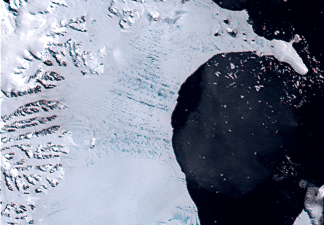Much conversation has centered on the concept of Collaborative Cartography and the endless possibilities it offers. Not only does the map geek community benefit but new and improved Geographical Information Systems (GIS) are exploring community-based applications that "facilitate public participation in geographic decision-making" (MacEachren, 2001). According to MacEachren entire neighborhoods are trying to coordinate and implement decisions regarding crime, fire, and flood plain areas. Collaborative Cartography methods allow everyone to be in different places at different times and still share real-time decision-making. The possibilities are unlimited, entirely different cultures can theoretically collaborate across oceans and mountains and make decisions about environment, trade, and major social issues such as religion and ethnic diversity. Though the concept sounds attractive Collaborative Cartography is not as easily achieved as one might believe. One of the central issues regarding this type of information sharing is the actual participation by the community. Community-based software relies very heavily on group effort and participation. The challenge is to first understand how to use the software and then begin collaboration. For example, one of the most challenging aspects in making a collaborative atlas that utilizes "different-place geocollaboration" (MacEachren, 2001) is not understanding the technology (nearly everyone can learn this aspect, given time) but getting individuals to actually sit down and collaborate. In my own experience, collaborative cartography worked surprisingly well. Everyone that participated in the effort really showed their ability to utilize software like Adobe Illustrator and ArcGIS is create visuals representation that explored a given theme.
As the planet becomes more and more populated it becomes increasingly obvious that there will be inevitable conflicts regarding some specific geographical region. Up and coming software like Google Earth Pro and SketchUp can be used in conjunction with collaborative cartography. For example, different ethnic groups can explore their population and mortality rates and make decisions regarding expansion or consolidation. Imagine the Israelis and the Palestinians collaborating on land rights and agricultural boundaries, think of all the lives that could be saved. If we are able to reach decisions prior to a conflict then modern computer technology has benefited humanity in ways sliced bread could only hope to. In addition to preventing human conflict, Collaborative Cartography can be used to define cultures as well. Imagine if the indigenous peoples of Australia (Aboriginals) could share information and data regarding specific locations of cultural importance and define regions of land that have been part of their heritage for a thousand years. The British peoples who control much of the Continent would be forced to recognize the lands of the aboriginal tribes because the world's modern cultures recognize map boundaries and commonly associate independence with such efforts. Australia and many, many, other countries that have assimluated indigenious peoples would theoretically be forced to recognize the independence of these tribes as small nations. In the same vein in would also be possible for certain culture who's people are scattered across the world to define a new type of nation, based on virtual-collaboration. Crazy talk, I know.
Subscribe to:
Post Comments (Atom)




No comments:
Post a Comment